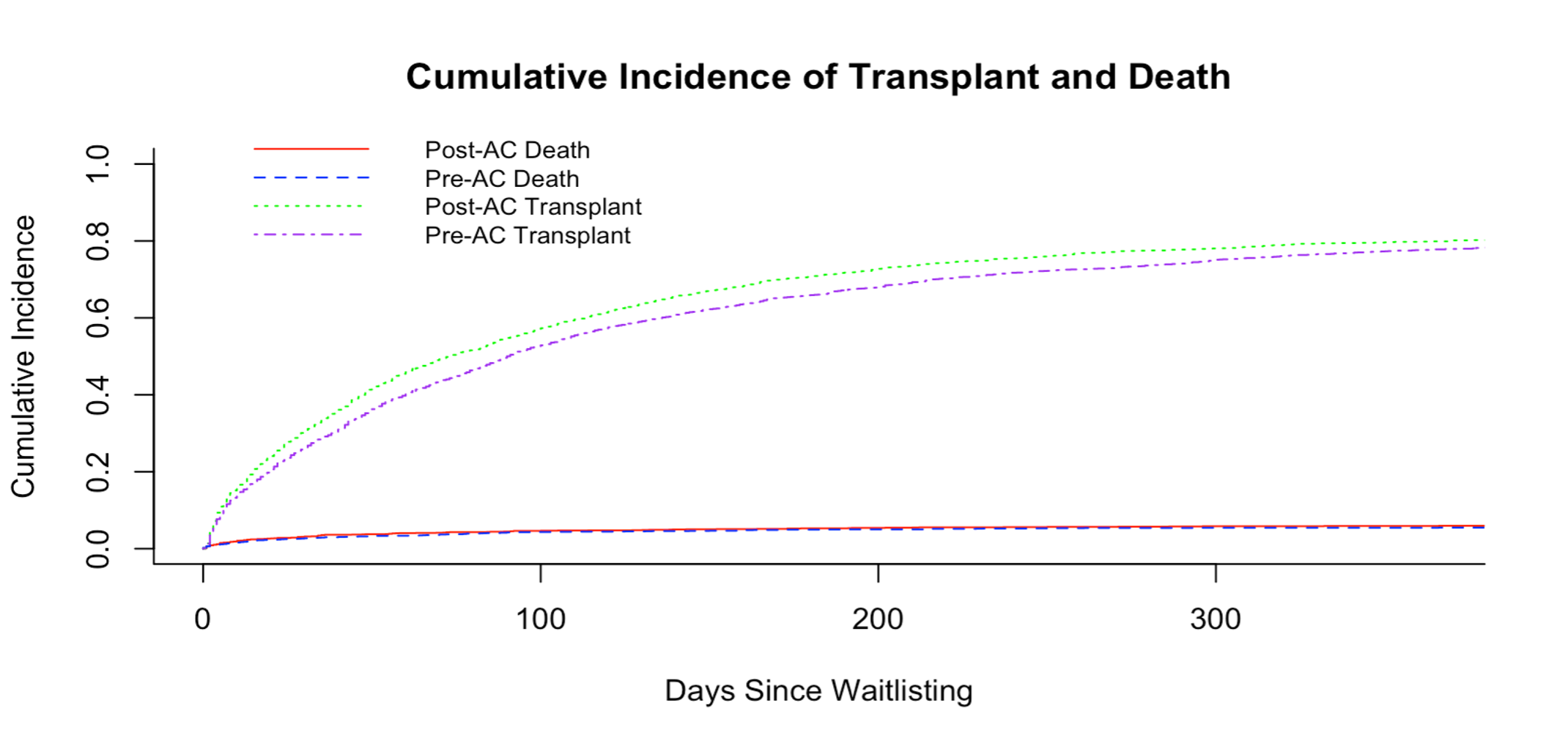Waitlist Outcomes After Acuity Circle-Based Distribution in Pediatric Liver Transplantation
Denise Lo1, Joseph F Magliocca2, Katherine Ross-Driscoll3.
1Department of Surgery, Emory University, Atlanta, GA, United States; 2Department of Surgery, Vanderbilt University Medical Center, Nashville, TN, United States; 3Department of Surgery, Indiana University, Indianapolis, IN, United States
Introduction: Pediatric liver transplant (LT) waitlist mortality remains unacceptably high. In 2020, the Organ Procurement and Transplantation Network (OPTN) implemented acuity circles (AC)-based liver distribution and national pediatric prioritization of pediatric donor livers. The effects of AC-based liver distribution on pediatric waitlist outcomes have not been well characterized.
Methods: Using OPTN data, waitlist outcomes for pediatric LT candidates listed between February 4, 2016 and February 3, 2024, were studied by age group and era relative to AC implementation.
Results: There were 5,605 waitlist registrations and 3,778 liver transplants. At 1 year, cumulative incidence of transplant was 77.8% pre-AC vs 79.9% post-AC; cumulative incidence of mortality was 5.4% pre-AC vs 5.9% post-AC. Median allocation Model for End-Stage Liver Disease/Pediatric Model for End-Stage Liver Disease at LT significantly decreased across all age groups post-AC (p<0.001). Candidates age 12-17 years experienced increased cumulative incidence of transplant (65.6% pre-AC to 79.5% post-AC at 1 year), decreased median time to transplant (66 days pre-AC to 37 days post-AC, p<0.001), and increased proportion of pediatric donor livers (37.9% pre-AC vs 66.2% post-AC, p<0.001). AC group was associated with increased likelihood of waitlist mortality for age 1-5 years and increased likelihood of transplant for age 12-17 years.
Conclusion: LT candidates age 12-17 years derived the most benefit from AC-based liver distribution.

The WebApp is sponsored by:

If you have any questions during the meeting, please go to the registration desk. Our emails will be monitored sporadically.
REGISTRATION DESK OPENING TIMES
Thursday, May 1, 2025, 07:00-17:30 Friday, May 2, 2025, 07:00-12:00